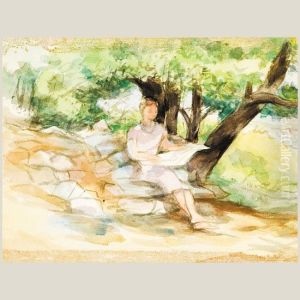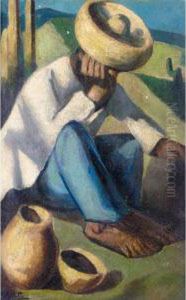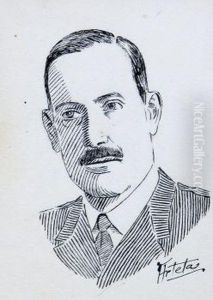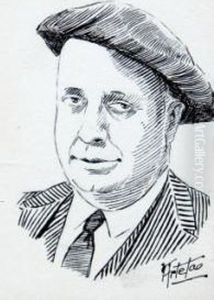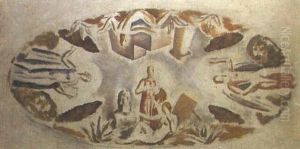Aurelio Arteta Y Errasti Paintings
Aurelio Arteta y Errasti was a Spanish painter born on November 9, 1879, in Bilbao, Spain. He was a prominent figure in the Basque artistic scene and well-regarded for his contributions to both social realism and traditional Basque art. Arteta studied at the School of Arts and Crafts in Bilbao and later moved to Madrid, where he continued his studies at the San Fernando Royal Academy of Fine Arts.
During his time in Madrid, Arteta was influenced by the works of the Spanish Old Masters, particularly Velázquez, as well as by the contemporary trends of European art. He developed a style that was characterized by a strong social component, often depicting the working classes and the rural folk of the Basque Country with a sympathetic and realistic eye. His works are noted for their careful composition, attention to detail, and a sober use of color.
After establishing himself as an artist, Arteta became involved in teaching and took up a position at the Vizcayan Arts and Crafts School. His commitment to education and the promotion of art in the Basque region was significant, and he played a key role in the cultural life of Bilbao.
Arteta's career was also marked by periods of travel, during which he came into contact with various avant-garde movements. However, he maintained a certain distance from these trends, choosing instead to focus on a more accessible and socially conscious form of art.
The Spanish Civil War (1936–1939) had a profound impact on Arteta's life and work. As a result of the conflict, he was forced to leave the Basque Country and eventually settled in Mexico. The themes of his later works reflect the disruption and suffering caused by the war.
Aurelio Arteta y Errasti passed away on December 10, 1940, in Mexico City. Today, his works are celebrated for their portrayal of Basque identity and society, and for their humanistic approach to the subjects he depicted. Arteta's art continues to be exhibited and studied, and he is regarded as one of the significant painters of the Basque region in the early 20th century.

